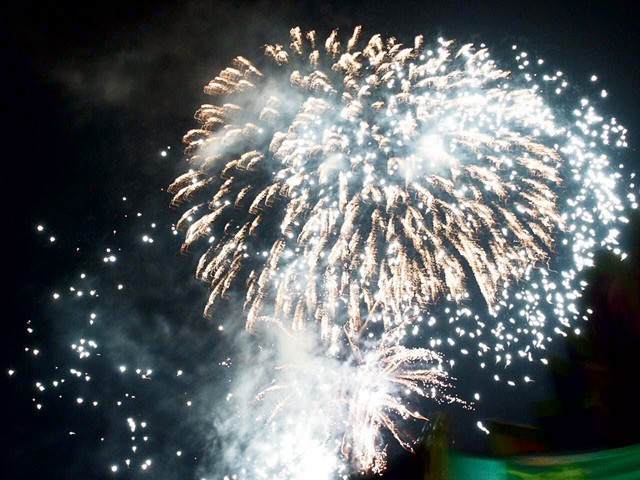New Year’s Eve is a special night celebrated in many countries throughout the world. People observe a variety of traditions to welcome the new year.
In Germany, New Year’s Eve is called “Silvester.” The name refers to a pope in the fourth century. Silvester I became bishop in Rome in 314 and died Dec. 31, 335. Later he was canonized, and since 354, the church celebrates the day of Dec. 31.
In Germany on New Year’s Eve, it is very common to have dinner in a restaurant, watch a theater performance, attend a festive dance or have a party with friends at home.
At midnight, they wish each other the very best for the new year, propose a toast and then go outside to shoot firecrackers. This noise-making tradition goes back to former times when people wanted to scare away evil demons so they could not do any harm to them in the coming year.
Another custom is to give little pigs, chimney sweepers, horseshoes or four-leaf clovers made of marzipan, chocolate, wood or porcelain. These are symbols of luck.
In ancient times, when people still believed in gods, they made sacrifices. They brought eggs, chickens and pigs to the altars hoping the gods would treat them nicely, send them rain for their vegetables in the fields and not too much snow in winter.
The horseshoe originates from a time when farmers used horses to plow their fields. In those times, horseshoes were put above the door to protect the family from fire and lightning. The horseshoe must be hung up the right way. The side with the opening cannot show to the bottom, because then the luck “falls out.”
The chimney sweeper frees the way to the top of soot and dirt and brings fresh wind. Also with the cleaning of the chimney, the chimney sweeper banned the danger of fires and, therefore, was seen as a lucky mascot.
The four-leaf clover is supposed to bring luck, but only when found and not being searched for. The clover is known to have the power of luck because it is so scarce. Also, it can be looked at as a salutary cross. Besides a Christian symbol, it was seen as a Celtic cross, which was the sign for protection. In general, the four-leaf clover is a world symbol showing the four directions and combining the four elements. It is said to prevent strokes of fate, raise students’ efficiencies and be advantageous for gamblers.
Germans also love the tradition of melting lead over the flame of a candle. The melted piece then gets poured into a bowl of water and everybody waits to see what designs come out. Each design has a different meaning for the future. Stores selling firecrackers also sell packages of lead with a list telling what each design or symbol means.
Traditions continue the first day of the new year. It is said that people should not get up late because, if so, they will sleep poorly all year long and have bad dreams. On New Year’s Day, children receive huge pretzels called the “Neujahrsbretzel,” and in many villages in the KMC, people go from door to door wishing a Happy New Year and getting a shot to drink.
Throughout the following days, the phrase “Prost Neujahr!” can be heard whenever people meet again for the first time that year. It means a toast to the New Year and good luck.



